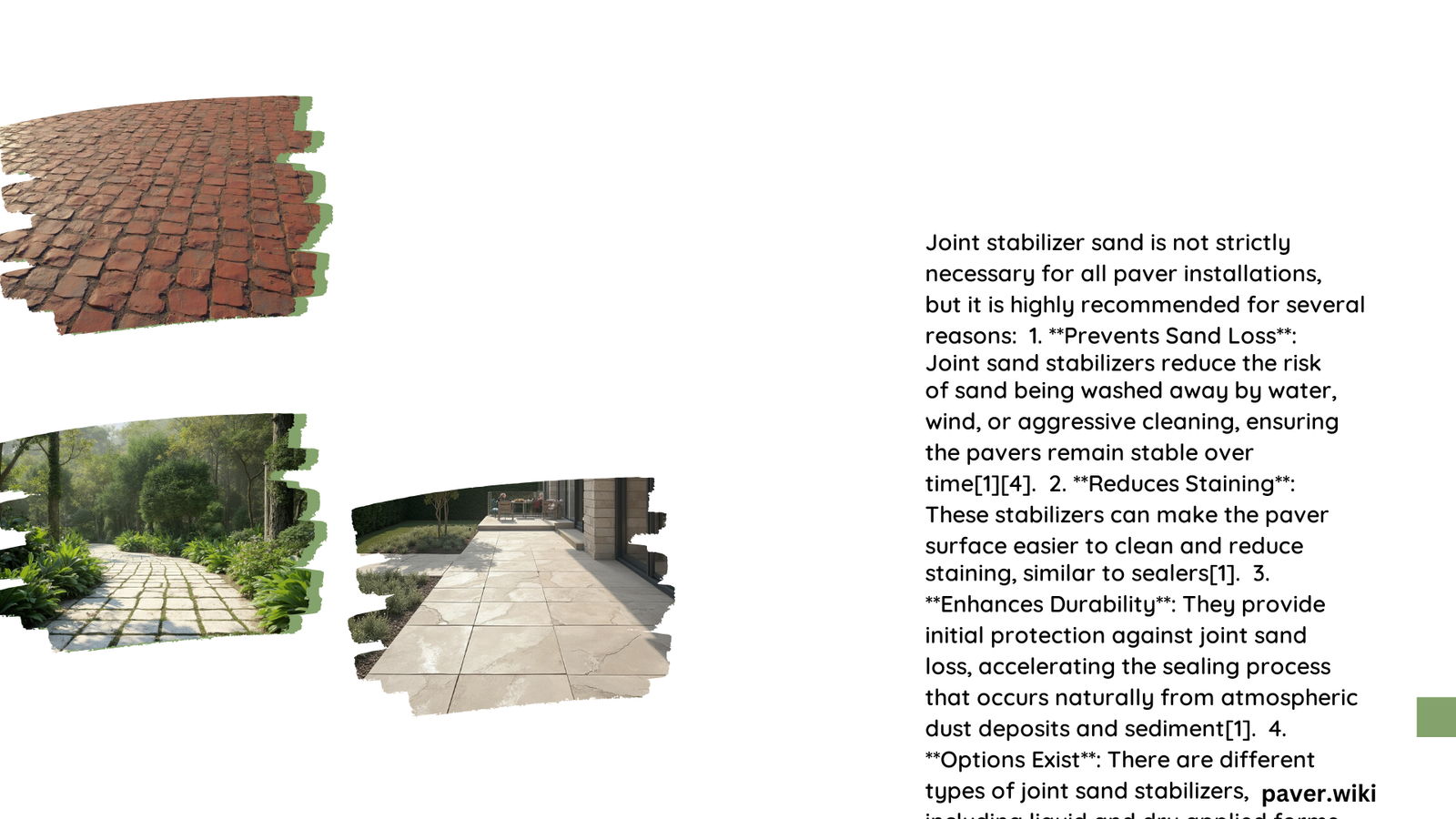Joint stabilizer sand, particularly polymeric sand, is highly beneficial for system pavers. It enhances stability, prevents weed growth, and improves durability. This specialized sand creates a strong bond between pavers, reducing maintenance needs by up to 90%. While more expensive than regular sand, it offers long-term cost savings and extends the lifespan of paver installations by 5-10 years or more. Let’s explore the necessity and benefits of joint stabilizer sand for system pavers.
What Makes Joint Stabilizer Sand Essential for System Pavers?
Joint stabilizer sand, especially polymeric sand, is crucial for system pavers due to its unique properties:
- Enhanced stability
- Weed prevention
- Pest deterrence
- Erosion resistance
These features contribute significantly to the longevity and appearance of paver installations. The polymeric sand forms a solid bond when activated by water, locking pavers in place and creating an inhospitable environment for weeds and pests.
How Does Joint Stabilizer Sand Improve Paver Durability?

The use of joint stabilizer sand substantially enhances the durability of paver installations:
- Lifespan Extension: Polymeric sand can extend the paver installation’s lifespan by 5-10 years or more.
- Reduced Maintenance: The need for frequent repairs and maintenance is significantly decreased.
- Weather Resistance: The binding properties of polymeric sand provide excellent resistance to erosion, even in challenging weather conditions.
This improved durability translates to long-term cost savings and a more stable, attractive paver surface over time.
What is the Correct Application Process for Joint Stabilizer Sand?
Proper application of joint stabilizer sand is crucial for optimal performance:
- Clean the paver surface thoroughly.
- Spread polymeric sand evenly over the pavers.
- Sweep the sand into joints, ensuring complete filling.
- Remove excess sand from the surface.
- Activate the sand with water according to manufacturer instructions.
It’s recommended to apply the sand during cooler, overcast conditions to prevent premature activation by direct sunlight. The joints should be filled completely, with the sand level about 1/8 inch below the paver surface.
How Much Maintenance is Required with Joint Stabilizer Sand?
One of the key benefits of using joint stabilizer sand is reduced maintenance:
| Aspect | Details |
|---|---|
| Frequency | Occasional cleaning and inspection; reapplication every 5-10 years |
| Cost Implications | Higher initial cost ($1-$3 per square foot) but long-term savings |
| Environmental Factors | Effective in various conditions due to binding properties and permeability |
While the initial cost is higher than regular sand, the long-term benefits in terms of reduced maintenance and extended lifespan make it a cost-effective choice for most paver installations.
What Are the Environmental Considerations for Joint Stabilizer Sand?
Joint stabilizer sand performs well in various environmental conditions:
- Heavy Rainfall: The binding properties prevent sand from washing out of joints.
- Freeze-Thaw Cycles: The flexibility of the polymeric bond helps withstand temperature fluctuations.
- High Temperatures: The sand remains stable even in hot conditions.
Additionally, the permeability of polymeric sand allows for proper water drainage, which is crucial for the overall health of the paver system.
In conclusion, joint stabilizer sand is indeed necessary for system pavers. Its benefits in terms of stability, weed prevention, durability, and reduced maintenance make it an essential component of a long-lasting and attractive paver installation. While the initial cost may be higher, the long-term advantages far outweigh this investment, making it a wise choice for both residential and commercial paver projects.
References:
1. Pristine Clean: Why use polymeric sweep sand for pavers, bricks and stones?
2. SPECCO: SJS (Sand Joint Stabilizer)
3. StoneForensics: The Hidden Secret to Perfect Pavers: The Importance of Sand in the Joints
